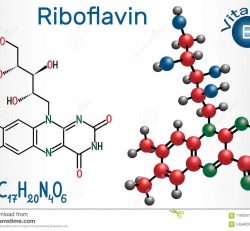BRITISH RESEARCHERS: PIG IMMUNOLOGY BREAKTHROUGH
British researchers have generated tools that allow scientists to understand a vital area of the pig immune system which was previously inaccessible.
The publication was authored by scientists from various universities and institutes in the United Kingdom, including e.g. Cardiff University and The Pirbright Institute. It appeared recently in the peer-reviewed PLOS Pathogens.
This particular research used a unique line of Babraham Large White pigs. This in-bred pig, 85% identical by genome wide SNP analysis, was used to to develop novel tools for examining the response of immune cells, called CD8 (killer) T-cells, against flu infection or vaccination in pigs.
Infection with influenza or aerosol vaccination
In a press release, shared by The Pirbright Institute, the methods developed show how the T- cells are recruited in large numbers in the lung after infection with influenza or aerosol vaccination.
The tools can also be used to identify virus proteins that are recognised by the immune system, offering the potential to design more effective vaccines. The same methods can be applied to other important pig diseases such as Foot-and-Mouth Disease (FMD) and African Swine Fever.
Tracking T-cells during infection of pigs
Dr Elma Tchilian, head of the Mucosal Immunology group at Pirbright said: “This study will equip us to track T-cells during infection and understand how best to vaccinate animals and humans to achieve powerful protective immune responses. Our tools fill a gap which previously hindered swine immunology research, and can now be used in the study of many diseases.”

Computerised animation of T-cells in action towards a pathogen. Illustration: Shutterstock
According to the scientists, T-cells can provide protection against multiple strains of flu, but current vaccines are unable to activate them effectively. The tools in this study were successfully used to examine pig T-cell responses to influenza for the first time, showing that aerosol delivery of a candidate influenza vaccine is highly efficient in triggering T-cell responses in the lung. This localised response is essential for protection against respiratory diseases.
Pigs provide a good model for influenza infection
Professor Andrew Sewell, lead author of the study, said: “Pigs provide a very good model system for influenza virus infection. They can be infected with both human and bird flu in addition to swine flu and are known to act as important ‘mixing vessels’ for the creation of pandemic flu strains.”
The study brings methods for studying these vital immune cells up to the same high standards that are available for humans and mice. Babraham pigs could play an important role in studying swine infectious diseases, and as a preclinical model for human disease.
The published article in PLOS Pathogens was authored by Katie Tungatt, Garry Dolton, Meriem Attaf, Anna Fuller, Thomas Whalley, Barbara Szomolay, David K. Cole, Pierre J. Rizkallah and Andrew K. Sewell, Cardiff Unversity, Cardiff, Wales, UK; Sophie B. Morgan, Johanneke D. Hemmink, Maria Montoya, John A. Hammond, Bryan Charleston and Elma Tchilian, The Pirbright Institute, Woking, UK; Emily Porter and Mick Bailey, University of Bristol, UK; Alain Townsend, University of Oxford, UK. John J. Miles was affiliated to both Cardiff University, UK and James Cook University, Cairns, Australia.
Vincent ter Beek
Editor of Pig Progress / Topic: Pigs around the world
Source: www.pigprogress.net














